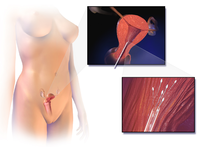
Photo from wikipedia
Abstract Air-injection artificial upwelling is considered as a way to promote the growth of phytoplankton and improve carbon sequestration. Some air-injection artificial upwelling systems have been established, such as in… Click to show full abstract
Abstract Air-injection artificial upwelling is considered as a way to promote the growth of phytoplankton and improve carbon sequestration. Some air-injection artificial upwelling systems have been established, such as in Norway and China. However, one of major obstacles for large-scale field application is lack of theoretical model to predict the effect of bubble-entrained plume's (BEP) influence factors, which is helpful to control bubble-entrained plumes, design the air-injection system and improve the efficiency of air-injection system. In this paper, a theoretical model is proposed to predict the maximum height of BEP and effect of BEP's influence factors. To validate the theoretical model, laboratory experiments were conducted in a circulating water flume. The results show that the theoretical approach can be used to calculate critical parameters of air-injection artificial upwelling system, such as BEPs maximum height, design volume flow rate of air injection, efficiency of air-injection system and so on. By using the theoretical result to design air-injection system and predict the optimal air-injection volume flow rate, the system can adopt to almost all velocity conditions in field application and the efficiency of air-injection system has an improvement about 8.33%–12.38%, which makes the system feasible and efficient in the usage.
Journal Title: Ocean Engineering
Year Published: 2019
Link to full text (if available)
Share on Social Media: Sign Up to like & get
recommendations!